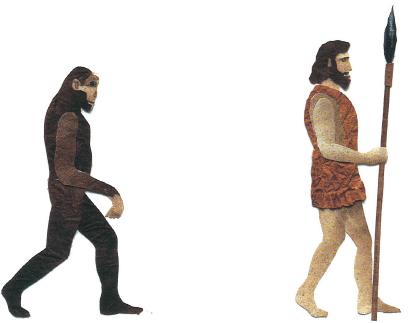 Education
Education
 Evolution
Evolution
 Human Origins
Human Origins
Evolution Readiness Project Overplays the Evidence for Evolution
As discussed in previous posts, the $1,990,459 taxpayer funded Evolution Readiness Project recommends reading to fourth graders a book called Life on Earth: The Story of Evolution.
The book gives a misleading picture of the development of biological thought when it comes to common ancestry. It says that when “scientists were creating systems to organize living things by placing them into groups,” the same “scientists thought, many different plants and animals had come from the same ancestors and had changed over time.” The problem is that this omits the glaring fact that the father of taxonomy himself, Carl Linnaeus, was not an evolutionist and in fact believed in the fixity of species.
While no one–including Darwin critics–would endorse in the fixity of species today, Linnaeus’s views aren’t totally irrelevant. He believed that biological groups were built upon common blueprints, and accounted for biological similarities through a view much more like common design rather than common descent. His teleological, non-common-descent-based view did not prevent him from inventing the working classification systems for biology that is still used today, 350 years later.
Linnaeus’s work proves that we can understand patterns of similarities and differences among biological species without assuming or inferring common descent. Somehow his inconvenient views got left out of the book. And of course, no mention is made of difficulties that scientists are currently facing when trying to fit all of life into a single “tree.”
Playing the Mutation Game
Life on Earth mentions the standard evolutionary view that sometimes “something unusual happens and completely new features, called mutations, appear in the next generation.” While it acknowledges that “most mutations are harmful” it states that “[s]ometimes, though, they provide an advantage and are passed on.” This is of course the standard evolutionary view and students should learn it. But there’s no mention of credible scientific critics of the standard Darwinian view of mutation.
Students are thus given a whitewashed version with no mention of the views of Lynn Margulis who believes that “Mutations, in summary, tend to induce sickness, death, or deficiencies. No evidence in the vast literature of heredity changes shows unambigious evidence that random mutation itself, even with geographical isolation of populations, leads to speciation.”
Moreover, we’re told that “After millions of years, accumulated small differences between one generation and the next have become big differences. … This is how evolution works.” But does the fossil record show evidence of such gradual change? While the book mentions the concept of stasis, there’s no hint that highly complex animal forms appear abruptly in the fossil record in the Cambrian explosion, without clear evolutionary precursors. Nor does the book mention that such sudden emergence of fossil groups is a common feature of the history of life.
From Ape to Human
As for human origins, the book states that 5 million years ago “The ancestors of early humans, descended from apes … are the first apelike animals to walk upright.” This is incorrect since there are earlier suspected examples of bipedal apes that are not ancestral to humans. Nonetheless, the graphic in the book shows an ape-like creature with a similar stature to man, as follows:

Once again, critics might accuse me of quibbling over technical details, but the gait of the “apelike” creature is portrayed as being nearly identical to that of humans. Yet even an evolutionist would concede that the alleged hominid ancestors of humans–species like artificially-reconstructed “Ardi” or the better established australopithecines–had a form of locomotion that was at best only semi-bipedal and was very different from that of modern humans.
Pictures are worth a thousand words, and this picture wrongly suggests that our “apelike” ancestors stood much like you and me in terms of posture and stature.
The intent here seems clear: present students with a dumbed-down and whitewashed version of evolution in the hopes that they will “believe in” this simple, neatly packaged version. The problem of course is that this version of evolution is sharply disputed by many credible scientists, and in some cases it’s plain wrong.
The “Evolution Readiness Project” curriculum goes far beyond merely reading the book Life on Earth: The Story of Evolution to students. It comes with a set of lesson plans that teachers can use to get students to “believe in” understand evolution.
Next, I will assess some of those lesson plans, and also offer a much-improved lesson plan for teachers who truly want their students to understand evolution objectively.
